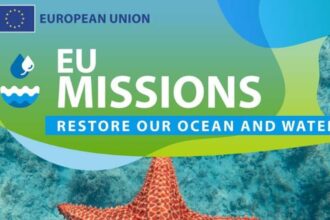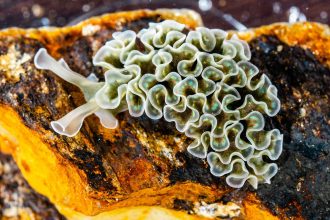B2E Technological Sonar Initiative #23
At the forefront of innovation in aquaculture and food industry, are revolutionary methods for rearing cephalopods, optimizing diets for juvenile salmon and even increasing the vitamin D content from common food products. In addition, biomass and food processing technologies reveal secrets for maximizing energy efficiency. Innovations in the extraction of bioproducts from cyanobacteria or snow crab offer potential both in the production of high-value nutrients and bioactive compounds for the health sector, helping to reduce environmental impacts and paving the way for a more sustainable future in health and food. All the information in another edition of B2E CoLAB’s Technological Sonar Iniciative.
AQUACULTURE
Cephalopod breeding method, cephalopod breeding apparatus, protozoan prevention method, and protozoan extermination method
Conventional cephalopod aquaculture techniques often have a high larval mortality rate, so there is a need for new techniques to overcome this problem. The present invention describes a cephalopod rearing method, including cephalopod rearing equipment, a protozoan prevention method and a protozoan extermination method, which involves periods of high-water exchange, as well as protozoan density control, resulting in a reduction in the mortality rate during cephalopod larval growth.
Espacenet
Discover more here.
AQUAFEED
Optimisation of trace mineral supplementation in diets for Atlantic salmon smolt with reference to holistic fish performance in terms of growth, health, welfare, and potential environmental impacts
The aquafeed ingredient inventory is ever changing, from marine to plant based, and recently evolving to incorporate increasing amounts of low trophic, side stream and circular economy based raw materials. Meeting the micronutrient requirement of farmed fish for healthy and efficient growth under normal and challenging conditions is of paramount importance. In this study it was run a trial based on a 2 × 4 factorial design with three replications for each dietary treatment, where Atlantic salmon smolt were fed one of 8 experimental diets supplemented with either organic or inorganic mineral premixes (copper, iron, manganese, selenium, and zinc) at four dietary inclusion levels. The results of this study provide valuable information for the development of sustainable aquaculture practices and feed formulation.
NCBI
Discover more here.
Coated fish feed compositions
This invention relates to fish feed (extruded, pressed or particulate pellets) and a coating composition surrounding the pellet and comprising an oil and a solid particle with an average particle size of between 5 µm and 600 µm. The invention further comprises methods for reducing the loss of nutrients (e.g. fats, proteins, vitamins, minerals) from the feed and methods for preparing coated fish feed.
Espacenet
Discover more here.
Enzymatic feed preservation
The present invention relates to a method for preserving feed or feed additives using an enzymatic antioxidant that prevents the degradation of proteins, vitamins, fats and lipids contained in feed ingredients. Polypeptides with catalase activity and/or superoxide dismutase activity or a combination of polypeptides with both activities are used as preservatives.
Espacenet
Discover more here.
LIVING MARINE RESOURCES – NEW USES AND ADDED VALUE
A system for the processing of biomass or food product or fish for processing, achieving an optimisation of the thermal potential energy with regard to the volume of a coolant fluid
The present technology is related to the aquaculture industry and food production in general. In particular, the present technology relates to a system for the processing of food portions, that achieves an optimization of the thermal potential energy, even under discontinuities of the process of loading the food portions to a cooling tank, due to the thermal exchange between the incoming object and the medium, with a lower volume of cooling, ensuring a more efficient average process productivity
Espacenet
Discover more here.
Vitamin D production method and vitamin D production device
In the vitamin D production method of the present invention, a food product is irradiated with light in the wavelength range of 280-315 nm inclusive, the cumulative amount of light being 45 mJ/cm2 or greater. The food product is selected from dairy products, eggs, shellfish, crustaceans, and cephalopods. According to this vitamin D production method, it is possible to increase the vitamin D content of a variety of food products.
Espacenet
Discover more here.
MARINE BIOTECHNOLOGY
Demineralization of organic tissue
The present invention relates to a method of processing by enzymatic hydrolysis an organic raw material comprising mineralized tissues (e.g. fish scales) to produce hydrolysates and mineralized tissue remains, comprising a protein fraction. The invention further comprises a plant for processing the organic raw material containing mineralized tissue and a method for demineralizing mineralized tissue to obtain solubilized minerals and demineralized tissue.
Espacenet
Discover more here.
Sequential Extraction of Valuable Bio-Products from Snow Crab (Chionoecetes opilio). Processing Discards Using Eco-Friendly Methods
In Atlantic Canada, snow crab (Chionoecetes opilio) is the most important commercial species for the fishery and the rural economy. Green extraction methods using a combination of mechanical, enzymatic, and green chemical treatments were evaluated for the sequential extraction of carotenoid pigments, protein, and chitin from crab processing discards. Three valuable crab bio-products were obtained: pigmented vegetable oil, pigmented protein powder, and chitin. Results of our crab bio-product characterization studies demonstrate that with further optimization and scale-up studies, green extraction methods can offer effective, eco-friendly, and safer alternatives to traditional chemically intensive approaches for valorizing snow crab processing discards.
NCBI
Discover more here.
Bioactive compounds obtained from cyanobacteria Leptothoe sp.
The present invention relates to bioactive compounds obtained from the cyanobacterium strain Leptothoe sp. LEGE 181152. The compounds obtained from the organic extract of this cyanobacteria are hypoxanthine arabinoside, 2′-deoxyinosine, and phormidolide D. These compounds were found to have cytotoxic activity towards cancer cells. Additionally, compounds now disclosed also have antifouling activity against macro- and microfouling marine organisms.
WIPO
Discover more here.





